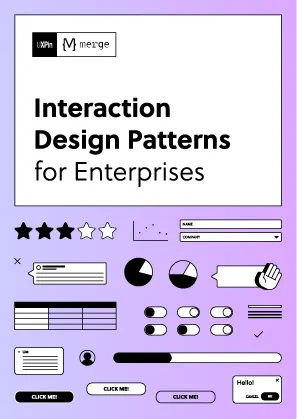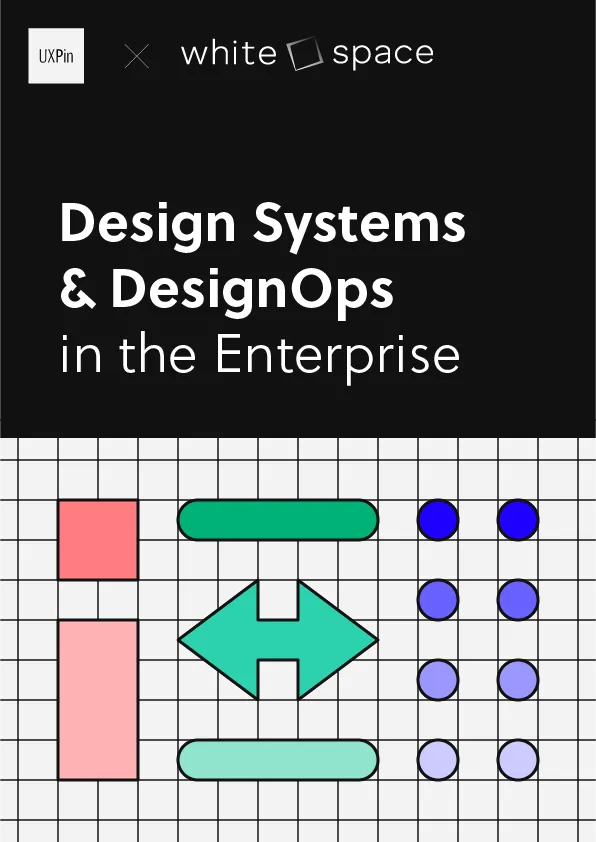AI tools are transforming prototyping by making it faster, easier, and more accurate. With features like code generation, automatic UI creation, and built-in libraries, these tools save time and improve collaboration between design and development teams. Here’s what you can achieve:
- Generate layouts from text prompts: Quickly create code-backed designs.
- Build interactive components: Add real-life interactions with minimal effort.
- Streamline feedback loops: Cut review cycles from days to hours.
- Produce production-ready code: Simplify handoffs to developers.
Key benefits include saving up to 50% of engineering time, improving design consistency, and reducing manual tasks. Whether you’re a UX designer or developer, AI-powered tools like UXPin Merge help bridge the gap between design and development, ensuring smoother workflows and faster results.
Prototyping with Generative AI – from idea to clickable …
Creating AI-Powered Interactive Prototypes
Building interactive prototypes with AI requires a clear and organized approach. Here’s how to get started:
Set Project Requirements
Start by defining the scope and goals of your project. Key areas to focus on include:
- User interaction objectives
- Necessary components
- Data handling specifics
- Performance expectations
- Accessibility guidelines
Benjamin Michel, UX Designer at Bottomline Technologies, highlights the value of thorough planning:
"I think UXPin is an underrated powerhouse of design and prototyping that allows complex applications to design low, medium, and high-fidelity designs to communicate complex interactions all in one place quickly and effectively".
Set Up AI Prototyping Tools
Prepare your tools by configuring the environment and selecting the right resources. Here’s what to do:
- Choose a component library, such as MUI, Tailwind UI, or Ant Design, or sync your custom Git component repository.
- Set up the AI Component Creator with OpenAI or Claude models.
- Configure interaction settings and variables.
- Define design system parameters to ensure consistency.
Once your tools are ready, you can begin building layouts and refining interactions.
Build and Modify Prototypes
Leverage AI tools to create and enhance your prototype step by step:
- Generate Initial Layouts Use AI Component Creator to produce code-supported layouts from text prompts. This is particularly useful for common UI elements like:
- Forms and input fields
- Data tables and grids
- Navigation menus
- Modal windows
- Customize Components Tailor components to fit your needs by:
- Adjusting properties and themes
- Adding interactions
- Implementing conditional logic
- Setting dynamic variables
- Add Interactive Features Enhance your prototype with interactive elements to simulate real user experiences.
Review and Update
Evaluate your prototype by comparing it to your initial requirements. Key steps include:
- Conducting user testing sessions
- Gathering feedback from stakeholders
- Monitoring performance
- Using AI tools to refine and improve based on feedback
David Snodgrass, a Design Leader, underscores the benefits of this approach:
"Been a fan. The deeper interactions, the removal of artboard clutter creates a better focus on interaction rather than single screen visual interaction, a real and true UX platform that also eliminates so many handoff headaches".
While AI streamlines the prototyping process, the expertise of a designer is essential to ensure the final product meets user needs and project goals effectively. Balancing automation with human input is the key to success.
sbb-itb-f6354c6
Adding AI Prototypes to Design Process
Team Collaboration with AI
Incorporating AI-powered prototypes works best when teams collaborate effectively across departments. At AAA Digital & Creative Services, the design team embraced this by using their custom React Design System.
Here’s how to enhance teamwork with AI prototypes:
- Build shared component libraries to ensure consistency
- Use clear naming conventions for better organization
- Enable automated notifications to keep everyone updated
- Hold regular sync meetings to align efforts
- Document how to use AI tools effectively
Mark Figueiredo highlighted how this approach cuts feedback cycles significantly – from days to just hours. This setup also makes it easier to transition into the development phase.
Connecting Design to Development
AI-powered prototypes make the link between design and development much smoother. Here are some key advantages:
- Automated Code Generation and Consistency: AI tools turn designs into production-ready code while keeping components uniform.
- Less Handoff Friction: Clear specs and maintainable code make implementation easier.
- Real-Time Updates: Design changes are instantly reflected in the development environment.
This integration ensures the design matches the final product, bridging the gap between creative ideas and functional results. Design Leader David Snodgrass shared his perspective on this improvement:
"Been a fan. The deeper interactions, the removal of artboard clutter creates a better focus on interaction rather than single screen visual interaction, a real and true UX platform that also eliminates so many handoff headaches".
AI Prototyping: Pros and Cons
Advantages of AI Prototypes
AI prototyping brings faster workflows, consistent results, and improved quality to the table.
Here are some of the main benefits:
| Benefit | Impact |
|---|---|
| Time Efficiency | Cuts engineering time by 50% for enterprise organizations |
| Quality Improvement | Ensures consistency using standardized component libraries |
| Workflow Enhancement | Shrinks feedback cycles from days to just hours |
| Resource Optimization | Saves months of manual labor |
However, while these benefits are impressive, teams still need to tackle implementation hurdles.
Common Issues and Fixes
AI prototyping isn’t without its challenges. To make the most of AI-driven workflows, teams should focus on these solutions:
- Component Standardization: Use clear naming conventions and provide complete documentation for components.
- Team Alignment: Schedule regular sync-ups between design and development teams to keep everyone on the same page.
- Quality Control: Set up structured review processes to maintain design consistency while using AI tools.
These strategies help teams unlock the full potential of AI prototyping. Larry Sawyer, Lead UX Designer, shared his experience with these tools:
"When I used UXPin Merge, our engineering time was reduced by around 50%. Imagine how much money that saves across an enterprise-level organization with dozens of designers and hundreds of engineers."
Next Steps
To incorporate interactive prototypes into your workflow effectively, try these practical steps based on the AI-driven techniques mentioned earlier:
Start with AI Component Creation
Write clear prompts to generate UI elements like tables, forms, and layouts. Save these components with their code so you can reuse them across multiple prototypes, ensuring consistency.
Leverage Pre-Built Libraries
Take advantage of React libraries to align with development standards and speed up your design process. This approach simplifies the transition from design to development.
Brian Demchak, Sr. UX Designer at AAA Digital & Creative Services, shares his perspective:
"As a full stack design team, UXPin Merge is our primary tool when designing user experiences. We have fully integrated our custom-built React Design System and can design with our coded components. It has increased our productivity, quality, and consistency, streamlining our testing of layouts and the developer handoff process."
Improve Development Workflow
Export React code directly from your prototypes to make development smoother. Follow these steps to see immediate progress:
- Start Small: Experiment with simple components to get comfortable with the AI Component Creator.
- Build Reusable Libraries: Create component libraries and integrate production-ready code into your workflow.
- Track Improvements: Measure time saved and the quality of your results to refine your process further.

